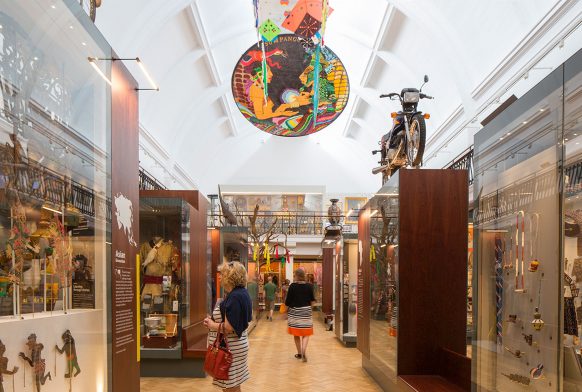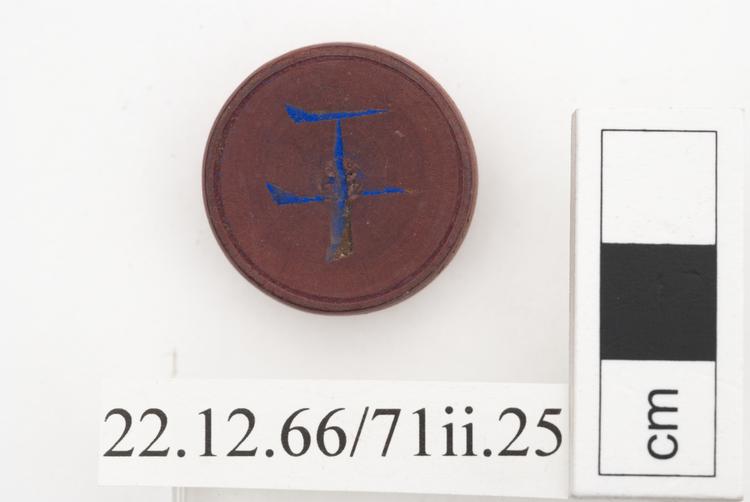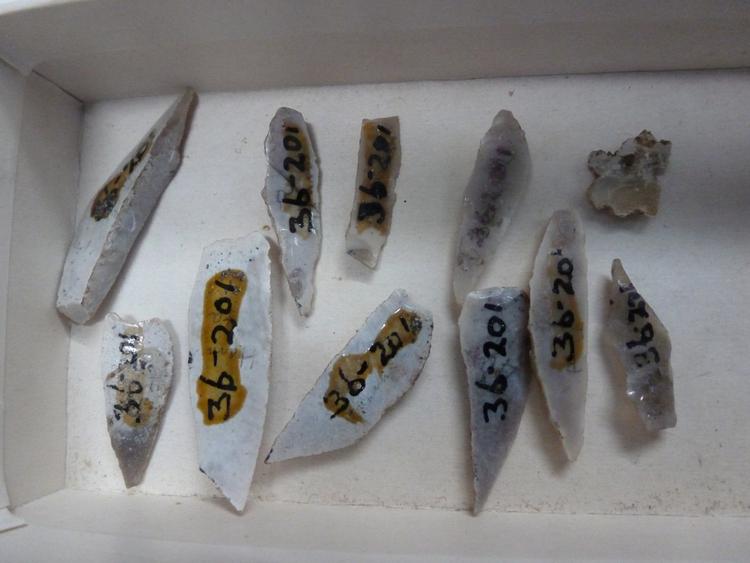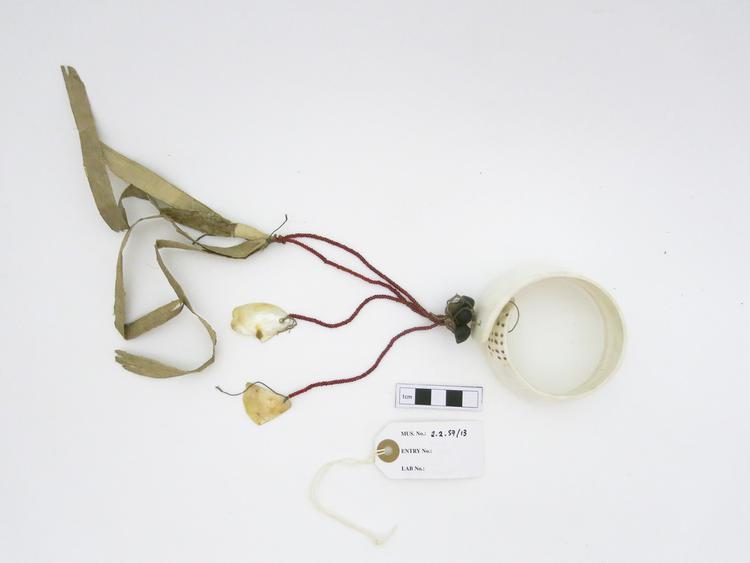
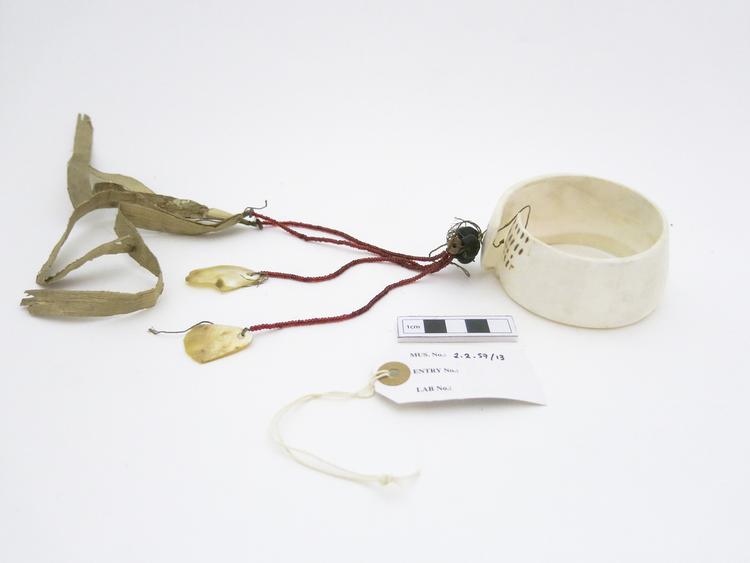
Kula ceremonial trading armshell constructed from the middle section of a large Conus shell, pierced at the rim. Through these piercings danglers are attached strung with beads.
Armlet for Kula Exchange, Mwari, Trobriand Islands, Massim Province, Papua New Guinea. One of the first great cultural wonders discovered by anthropologists in the Pacific region was the kula ring. When Bronislaw Malinowski, a young London-based Polish anthropologist, published Argonauts of the Western Pacific in 1922, many Western people were amazed at the complicated economic life of the Trobriand Islanders. For centuries, the inhabitants of this small island group off the New Guinea mainland’s eastern peninsula have garnered prestige and status for themselves and their islands by competitive gift-giving. Within the Kula Ring, as it has come to be known, special high-status armlets (mwari) such as this object here, are exchanged for equally high status pearlshell necklaces (vaiguwa) from neighbouring islands. These exchanges come about by groups of men sailing from one island to another, and making a formal presentation, which is returned in kind. Because the islands are arranged in a ring, and all the exchange partners are ultimately interconnected, the mwari armlets circulate anti-clockwise, and the vaiguwa necklaces circulate clockwise in return. As they circulate, these kula valuables develop a kind of ‘life history’ all of their own, which makes them more and more precious as time goes on. The mwari is made from a large Conus shell, ornamented with bead attachments. Shell, seeds, vegetable fibres. Early 20th Century. Collected by Vice-Admiral Maurice Fitzmaurice RN, and sold by his family to the Horniman Museum after his death.



